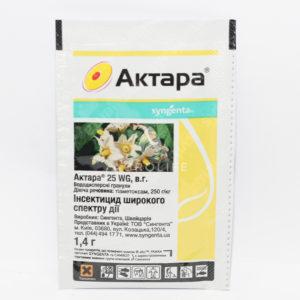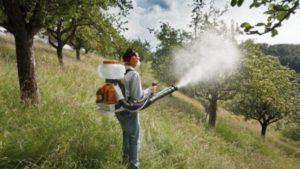Mining moth: how a butterfly spoils entire cities
Content
The chestnut leaf miner is the main pest of one of the most popular plants in urban parks in European countries, the horse chestnut. The Ohrid miner destroys foliage, which causes irreparable harm to plantings. The need to fight it becomes more and more difficult every year.
What does a chestnut moth look like (photo)
Description and appearance
Name: Chestnut moth, Ohrid miner
Latin: cameraria ohridellaClass: Insects - Insecta
Squad: Lepidoptera - Lepidoptera
Family: Moth moths - Gracillaridae
 | Habitats: | garden |
 | Dangerous for: | horse chestnuts |
 | Means of destruction: | folk methods, chemicals |
An adult Ohrid miner looks like a small butterfly - body length - 7 mm, wingspan - up to 10 mm. The body is brown, the front wings are distinguished by a bright motley pattern and white lines on a brown-red background, the hind wings are light gray.
White paws are decorated with black dots. The insect was called a miner because of the ability to lay passages (mines) in the leaves.
Chestnut mining moth scientists refer to the family of moths, which are a type of butterfly that can invade the territory of other species.
The development cycle of the pest consists of a two-year active period, when caterpillars that have emerged from eggs are able to destroy large areas of tree plantings. Then follows 3-4 years of calm.
Cycle of life
During its life, a mole goes through 4 main life stages:
Mining moth harm
The insect is considered one of the most aggressive species of moth, which destroys the leaves on the trees as quickly as possible.
During the season, the females of the Ohrid miner manage to give 3 offspring. As the chestnut moth caterpillar grows in the mining passages, the amount of plant mass it absorbs increases. On the leaves, damage becomes visible already at the 4th-5th stage of development.
Leaf plates, eaten by caterpillars, become covered with brown spots, begin to dry out and fall off. Due to the massive damage to the leaf mass, the trees do not have time to accumulate nutrients during the season, which leads to the freezing of chestnut trees or the drying out of a large number of branches in winter.
In the spring, leaves on such trees do not bloom well, weakened plantings are more likely to be invaded by other pests (insects, fungi, etc.). Besides, chestnut miner moth serves as a carrier of viral infections, which can infect trees and other plants.
Mass defeat was noted by specialists in greenhouses, where seedlings are planted for planting in parks.
In the parks of Europe (Germany, Poland and other countries), chestnuts are the main breed used in landscaping parks. Damaged trees lose their decorative effect and die within a few years.
The economic damage from the actions of the chestnut moth and the subsequent replacement of trees with other species that are more resistant to pests is estimated by specialists in the German capital Berlin at 300 million euros.
Plants affected by the chestnut miner
The main plants susceptible to attack by the chestnut moth are horse chestnuts of white-flowering species (Japanese and common). However, some varieties of chestnuts (Chinese, Indian, California, etc.) do not attract butterflies, because on their leaves, caterpillars die already at the first stage of development.
Additionally, chestnut moth attacks other types of plants, planted both in summer cottages and in city parks:
- decorative maples (white and holly);
- girlish grapes;
- shrubs (roses, holly, rhododendron).
Signs of damage and prevention
In home gardens, many owners prefer to use methods that help prevent the laying of eggs of the chestnut leafminer and reduce their numbers.
To prevent the reproduction of pests, several methods are used:
- wrapping tree trunks with glue belts during the beginning of the summer of butterflies;
- hanging adhesive tape or yellow plates at the height of the crown, which are abundantly smeared with Pestifix glue - this helps to catch moths in the summer;
- harvesting fallen leaves in autumn, in which pupae and butterflies hide for the winter;
- treatment of tree trunks with insecticidal preparations to destroy pests that are clogged under the bark for wintering;
- deep digging of the soil in the near-stem circle of chestnuts on an area of at least 1,5 crown diameters.
How to deal with a mining chestnut moth
There are several ways to deal with the Ohrid miner: folk, chemical, biological and mechanical.
Folk remedies
A folk method that excludes the use of pesticides is to treat chestnut plantations at the first stage, when butterflies flying around the trees begin to lay their eggs (in Russia this happens in May).
To do this, use a solution of Liposam bioadhesive, green soap and water. The resulting liquid is sprayed on the trunks and branches of trees, as well as the near-stem circle of soil the size of 1,5-2 crown diameters. This method helps to neutralize insects by sticking their wings together. When the solution hits, the butterfly rushes to the leaves or trunk and dies.
Chemicals
The chemical method consists in 2-3 single treatment of trees with solutions:
- systemic pesticides (Aktara, Karate, Calypso, Kinmiks, etc.), to which the active substances of Agro-surfactant are added;
- contact-intestinal insecticides (Aktelik, Decis, Inta-vir, Karbofos, etc.) with the addition of Agro-surfactant.
Treatment with chemicals is recommended by spraying chestnut foliage and soil under trees every 2 weeks throughout the season, alternating preparations. This helps reduce the risk of pests becoming addicted to insecticides.
Biological preparations
Biologically active drugs are used throughout the spring and summer season. For processing, larvicides, ovicides, Bitobaxibacelin, Dimilin, Insegar (chitin synthesis inhibitors) are used. These drugs of contact action inhibit the formation of a chitinous membrane, which leads to the death of pests at the larval stage.
The mechanical method of protection consists in treating the crowns of trees with a strong water jet from a hose, which allows knocking insects to the ground during the summer.
The mining moth also has natural enemies - these are more than 20 species of birds common in Europe. They actively eat caterpillars and pest pupae. They also feed on moth larvae and some types of insects (ants, wasps, spiders, etc.).
The chestnut miner moth is a formidable pest that can cause the death of trees. Its danger is great because the disease on the plant can be noticed when it can no longer be cured. And the speed of the spread of moths in European countries indicates the need for urgent measures to save decorative plantings in public parks and gardens.
Previous

